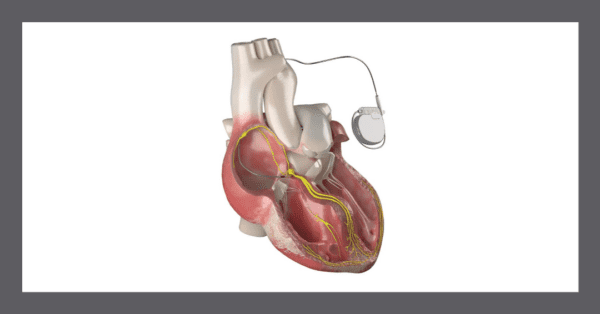|
Physiological Pacing Momentum | Stiff Heart Breakthrough
August 5, 2022
|
|
|

|
|
Together with
|

|
|
|
“Conduction system pacing has the potential to change the treatment of heart failure.”
|
|
Mihail Chelu, MD, lead investigator of the imminent PCORI-funded Conduction System Pacing study.
|
|
|
We’re happy to share a special interview detailing how Cleerly’s CCTA AI solution allowed one of its own team members to catch and treat his potentially life-threatening atherosclerosis.
Join Terry Schemmel, and Anita Vadria, MS, PA-C, as we discuss Terry’s journey as both a Cleery patient and team member, and how Cleery helps physicians identify and treat their high-risk asymptomatic patients.
|
|
|
Surgeries & Interventions
|
|
|
|

|
|
Physiological pacing has witnessed tremendous growth in the last ten years, and new funding may provide the evidence physicians need to make it the heart failure standard of care.
PCORI awarded $31M to Baylor University researchers to compare the standard Biventricular pacing (BiV) with the emerging conduction system pacing (CSP) – two cardiac resynchronization therapies that restore healthy heartbeat patterns in both HF and reduced ejection fraction patients.
BiV improves heart failure in 60-70% of patients by pacing simultaneously from two discrete sites: the right ventricular apex and the left lateral wall. In contrast, CSP relies on one lead implanted at either the His bundle or left bundle branch to directly stimulate the heart’s native conduction network. It is considered more physiologic, and it closely reproduces what happens naturally.
Observational and small-scale RCTs have shown that CSP produces equal or even better QRS duration and LV function improvements and possibly greater hemodynamic benefits. But CSP still needs to pass a large-scale RCT test before widespread adoption can happen.
Enter: PCORI-funded Baylor researchers. Here is what we know about how they plan to investigate the long-term mortality benefits and safety of CSP compared to BiV:
- Fifty-five centers will randomly assign more than 2k eligible patients to receive either CSP or BiV pacing.
- Follow-up will be five years.
- The endpoints will be death and heart failure hospitalization.
The Takeaway
This multi-center trial will answer an important clinical question on pacing and heart failure, and may very well impact clinical practice in EP and HF.
|




|
|
A New Standard of Cardiovascular Care
Heart disease is the leading cause of death, so it might be time to change how we think about heart attack prevention. Read Cleerly’s manifesto on why our current approach is unsustainable, how Cleerly’s AI-based platform can transform care, and what it will take to change today’s unacceptable heart disease statistics.
|
|
Us2.ai and EchoNous Integrate
Us2.ai’s echocardiography reporting automation solution is being integrated into the EchoNous Kosmos ultrasound platform, creating the most powerful diagnostic “power tool” ever created for the hand-carried POCUS market.
|
|
- Pfizer Drops CVD Drug: Pfizer axed cardiomyopathy candidate PF-07265803 from its phase 3 pipeline after it failed an interim futility analysis. Pfizer inherited the LMNA-related dilated cardiomyopathy drug candidate through its $11.4 billion Array BioPharma acquisition three years ago. The decision wipes out a potential pillar of Pfizer’s rare cardiology strategy and comes as a disappointment for patients suffering from the rare disease.
- Stiff Heart Imaging Breakthrough: For the first time, clinicians can measure the efficacy of chemotherapy in patients with light-chain cardiac amyloidosis (stiff heart syndrome), thanks to the amyloid-measuring technique CMR Extracellular Volume Mapping (ECV). Researchers demonstrated that chemotherapy frequently reduced amyloid production, and CMR-derived measurements at six months independently predicted death (hazard ratio 3.82). Physicians may be able to incorporate ECV findings into their therapeutic and prognostic decision-making.
- Impella Pump Falls Short: JAMA published an observational study that compared two assist devices: The newer, more widely-used Impella versus the older IABP. The Yale-led team used medical claims data from 1,600 patients with cardiogenic shock and found that patients treated with Impella were 63% more likely to die in the hospital, 71% more likely to die at 30 days, and 44% more likely to die at one year. Also, average costs were $50k higher in the Impella group. Oof. The authors note that this is an observational study and that an RCT is needed to clarify the findings.
- 4 Strikes and You’re Out: A 2,000 patient consumer survey from ModMed found that 73% of patients keep a “mental scorecard” of their doctor visits and give an average of four strikes on poor experiences before picking a new provider. Timeliness and modern technology use were the top factors contributing to a good experience, although 67% said staff friendliness influences their provider choice, and one-third said they’ve switched providers due to an unpleasant encounter with office staff.
- BIOS Extends Neurocardiology Collab: BIOS Health secured $1.4M (total funding now $5.7M) to continue collaboratively researching the neural biomarkers associated with cardiac activity. Their overarching goal is to create machine learning-powered neural interfaces that use real-time feedback to modulate cardiac function. The startup envisions a world where people can have their chronic conditions managed via their nervous system directly by AI– replacing pharmaceutical interventions altogether.
- 5 Tips for Dobutamine Shortage: In light of the ongoing dobutamine shortage, the ACC outlined a series of strategies cardiologists can use to combat the scarcity. Here are the highlights: (1) Use alternative inotropes and vasopressors, (2) Consider milrinone as the best alternative for low cardiac output conditions, (3) Utilize adenosine nuclear stress test or stress CMR to evaluate ischemia, (4) Utilize diagnostic modalities like MRI, PET or SPECT with thallium or technetium to assess myocardial viability, and (5) prioritize dobutamine for low-dose DSE.
- ‘Staggering’ CVD Rise Projected: A study published in JACC projects steep increases in CV disease in the coming decades. By the year 2060, the number of people with ischemic heart disease will likely increase by 31% (22M to 29M), HF by 33% (10M to 13M), myocardial infarction by 30% (12M to 16M), and stroke by 34% (11M to 15M). The authors also estimate that racial disparities in CVD will exacerbate over time– the prevalence of CVD is projected to decrease among White people but increase dramatically in non-White populations.
- Siemens Supports AvoMD: AvoMD named Siemens Healthineers as a supporter of its app that will make the CAD-RADS 2.0 expert consensus document available to referring clinicians at the point of care. AvoMD’s app combines the Society of Cardiovascular Computed Tomography’s clinical expertise with AvoMD’s decision support technology in order to streamline CV care. Siemens is providing financial backing to offset costs associated with app development.
- Resident Physician Unions: Two JAMA editorials shed light on the rise of resident physician unions amid the increasing corporatization and consolidation of health care. The first editorial outlined current labor laws and advised physicians to consider the advantages of collective bargaining and mobilization. He also warned that unions are “not a panacea” and cannot transform the “capital-intensive nature of healthcare systems.” The second editorial called attention to the benefits of unionization for physicians-in-training, emphasizing that the current culture breeds burnout and exacerbates the nation’s physician labor shortage.
- Diagnostic Robotics Series B: Diagnostic Robotics raised a $45M Series B round (total funding now $69M) to develop its AI-powered tools for population health management and triaging patients to optimal care sites. The predictive models leverage “nuanced definitions of risk” and have successfully prevented congestive heart failure deterioration and unnecessary emergency room visits.
- H2FPEF Outperforms HFA-PEFF: Despite requiring less data, the H2FPEF score was better at identifying HFpEF compared to the HFA-PEFF score. When researchers used both approaches to discriminate between patients with HFpEF from controls (N=736), they found that the H2FPEF score had a greater AUC (0.85 vs. 0.71). Specificity was “robust” for both scores, but sensitivity was poorer for HFA-PEFF (False negative rate: 25% vs. 55%).
|
|
Cardiovascular Structured Reporting Adoption Benefits
Check out this Change Healthcare report detailing the benefits of cardiovascular structured reporting, and how to drive structured reporting adoption in your own organization.
|
|
Nanox AI’s CPT III Codes
The American Medical Association added new CPT III codes for quantitative CT tissue characterization, paving the way for more health systems to adopt Nanox AI’s HealthCCSng CAC scoring population health solution.
|
|
|
|
|